Until the end of World War II, the possession of a battleship emphasized the status of the owner country as a superpower. The Bolsheviks, who cut the royal fleet into the metal, also realized in time that they needed such ships.
Therefore, in the mid-1930s, Soviet engineers began developing battleships-giants of Project 23 "The Soviet Union". Truly huge leviathans had to have reliable armor and a major caliber capable of crushing any opponent.
It was planned that the first eight ships would enter service in 1941. However, such plans were not feasible - the industry could not cope with the forthcoming amount of work, the size of which was not even represented by the creators of the battleship program: the USSR had no experience building such large ships.
As a result, by June 22, 1941, the readiness of the first two ships of Project 23 was 21% and 17.5% respectively. But the main caliber - 406-mm gun was manufactured and even participated in the battle with the Nazis. It was the most powerful weapon ever used by the Soviet army in the battle.
140 tons of steel to forge the trunk.
The production of a 406-mm gun barrel (B-37) was a difficult task. This required an ingot of special high-quality steel weighing more than 140 tons, without extraneous inclusions. For the casting, two open-hearth furnaces were used, and the ingot itself was forged on powerful presses with an effort of up to 6,000 tons.
The barrel was worked on special machines, then deep drilling was carried out to the full depth of the trunk, a final boring, grinding and cutting channels. Initially, due to lack of proper experience (the revolution destroyed many trained personnel, a number of technologies were lost), these jobs took a little more than a year. The total length of the barrel of the B-37 gun was 50 calibers - more than 20 meters.
The weight of the barrel with the bolt was almost 136.6 tons (like 4.5 T-34 tanks). The weight of the cannon shell was 1105 kg, and the charge - 319 kg. The shooting range was at the level of 45.6 km. True, the kinetic energy of the shells was so high that they had to be excavated from the ground after the firing to be brought to the laboratory for inspection and measurement.
A powerful weapon could cope with practically any known ship armor of that time: an armor-piercing shell pierced a vertical homogeneous armor plate with a thickness of over 614 mm at a distance of 5.5 km. From a distance of 13.6 km 406-mm armor was punched.
Protection from such shells, and then not everywhere, was possessed only by the Japanese superlikor "Yamato", whose towers of the main caliber had frontal armor of 650 mm.
Protection of Leningrad
In order to test the guns at the NIIMAP range (scientific-testing naval artillery range), in the beginning of 1940 a special "polygon machine" MP-10 was made, its length was 13.2 m and height - 5.8 m. To withstand the mass and return 406-mm guns, as a base used a reinforced concrete block weighing 720 tons.
The gun could rotate, for which it was installed a cast steel ring with a mass of 60 tons. The mechanism included 96 balls with a diameter of 203 mm, located on a ball bearing with a diameter of 7460 mm.
The shells were brought in by truck, and a special crane was used to unload them. Immediately after Germany's attack on the USSR, the gun was being prepared for combat operations. The barrel worn out during previous tests was replaced, pointing points with a light guide for night firing were installed, 10-meter earthen shafts were piled to protect the installation. However, during the entire war the Germans did not succeed in finding the position of the B-37.
And the Red Army men themselves did not know about the existence of such a powerful weapon. Until now, the story of Nikolai Kislitsyn, the defender of Leningrad, has survived: "I recall how occasionally a dull, powerful sound shook the glass among the habitually sounding explosions of shells and artillery shots. For a long time I was puzzled until I met with one artilleryman. It turned out that in the pre-war period, the design and construction of the new high-class surface ships was developed. For them, 406 mm caliber guns were tested at a sea testing range near Leningrad. "
In a curious way, artillerymen of the Rzhev polygon fought with a shortage of ammunition. The same Kislitsin recalls: "The stock of shells was small, and when it was exhausted, the artillerymen began digging deep shells buried in the ground during the tests and bringing them into combat condition."
Funnels with a diameter of 12 meters
There are many episodes of the use of this destructive weapon. We give a few here. At one of the nameless heights (112.0) on the approaches to the city of Pushkin from the north the Germans equipped a well fortified point.
Reinforced concrete structures were almost impregnable, and the fire of field artillery did not give effect. The commander of the Red Banner Baltic Fleet, Admiral Vladimir Tributs, instructed the NIAP artillerymen to destroy this difficult goal. Several hits from the 406-mm gun were enough to make an explosion above the hill and a strong fire. All the long-term fortifications and the protected ammunition depot were completely destroyed.
One accurate hit of the projectile was enough to completely destroy the crossroads near the village of Kameshki. The road was destroyed so much that the enemy could not take out anti-tank and anti-aircraft batteries.
During the breakthrough of the Leningrad blockade, 33 406-mm shells were fired at the German troops. A direct hit destroyed an important enemy strongpoint - the building of power station No. 8, which the Nazis turned into an impregnable fortress. 1108-kilogram armor-piercing shell completely destroyed the building, leaving a funnel with a diameter of 12 m and a depth of 3 m.
This weapon has survived to the present day. Now it rusts in the place of its combat service. Created for the arms of superlinkorov, it turned out to be useless after the war. The first time in the 1950s-1960s, the MP-1 tower was used to shoot new shells and test the swinging parts of the experimental guns, then it was abandoned.
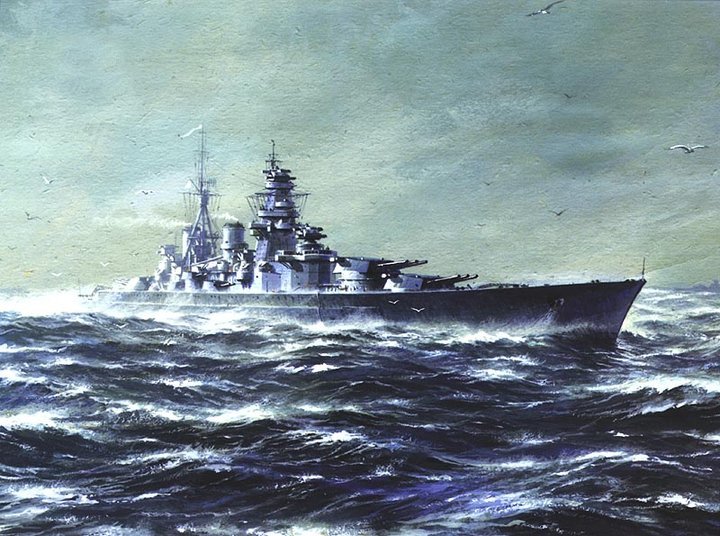
So the project's battleship could look like 23

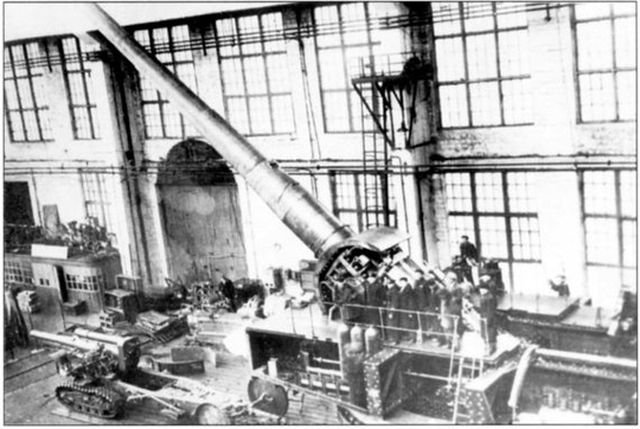
406-mm gun B-37 on the installation of MP-10. (In the bottom left corner, the most powerful at that time weaponry of the ground forces - 203 mm howitzer B-4). Photo: army-news.ru
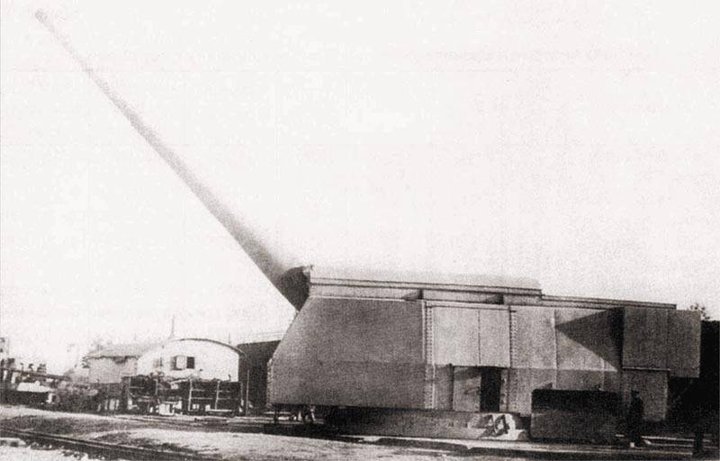
The experimental installation of the B-37 gun in a single-barrel polygon installation MP-10, the NIIMAP test site, 1940. Photo: army-news.ru
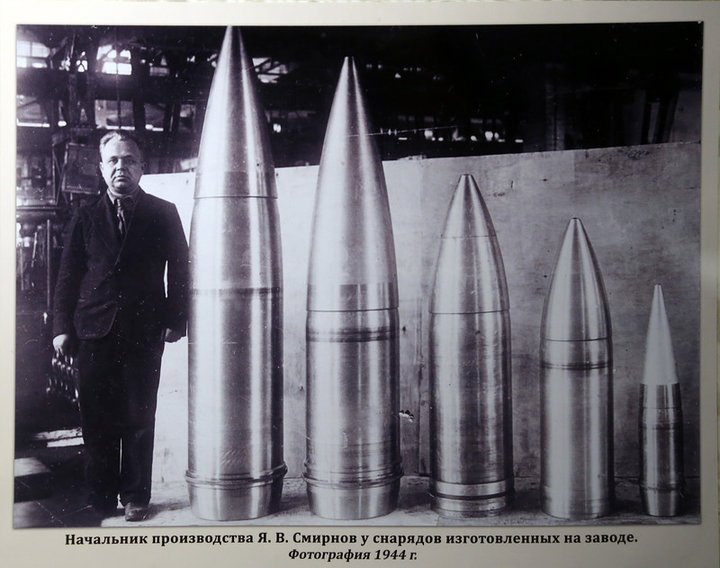
The first is a 406-mm projectile. Photo: ru-artillery.livejournal.com

Enemy DOT, destroyed by fire 406-mm guns. Red Village. January 1944 Photo: flot.com
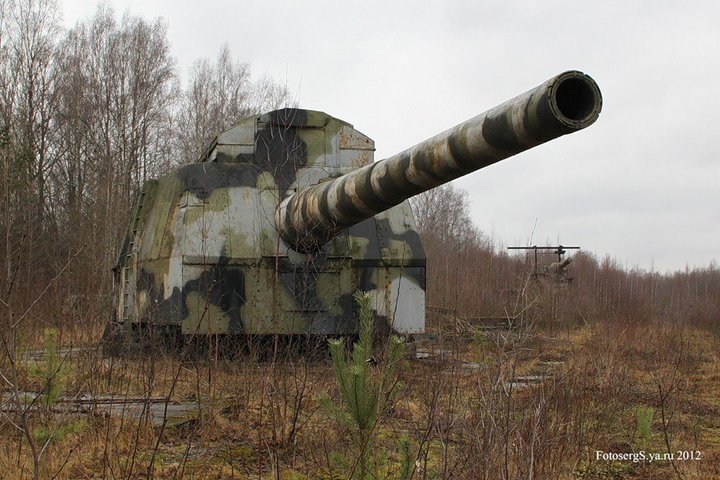
B-37 in our time. Photo: vk.com
Congratulations @yes88! You have received a personal award!
Click on the badge to view your Board of Honor.
Do not miss the last post from @steemitboard!
Participate in the SteemitBoard World Cup Contest!
Collect World Cup badges and win free SBD
Support the Gold Sponsors of the contest: @good-karma and @lukestokes
Congratulations @yes88! You received a personal award!
You can view your badges on your Steem Board and compare to others on the Steem Ranking
Do not miss the last post from @steemitboard:
Vote for @Steemitboard as a witness to get one more award and increased upvotes!